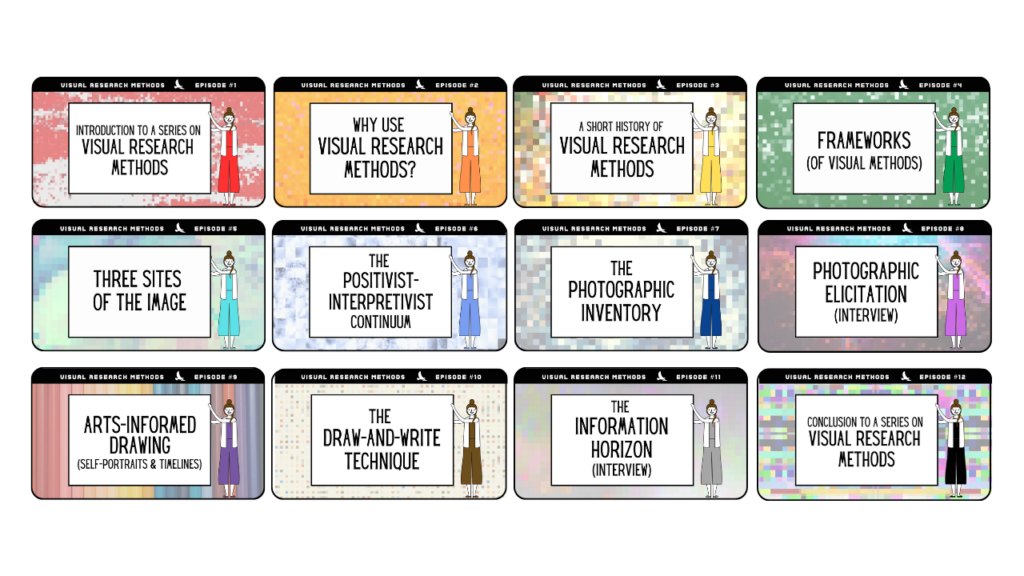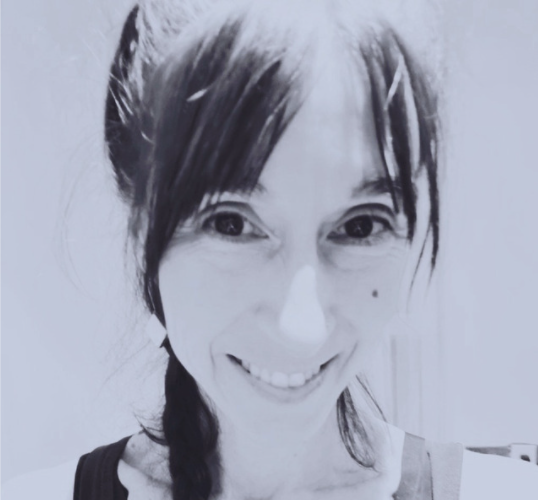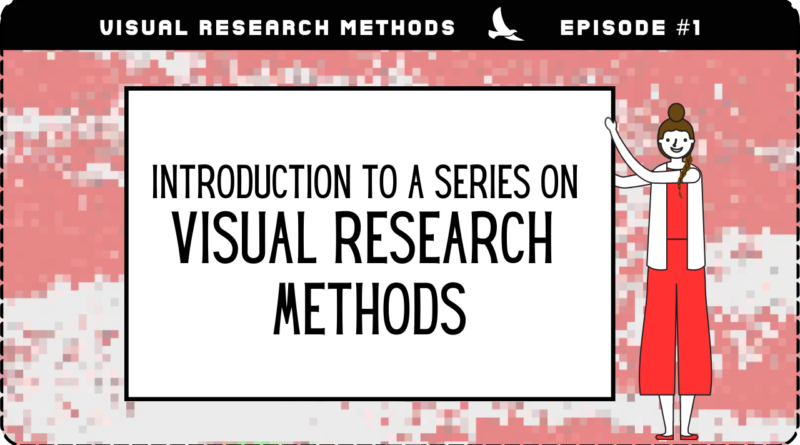A New Video Series on Visual Research Methods at INFIDEOS
A New Video Series on Visual Research Methods at INFIDEOS
Jenna Hartel
Visual research methods can be used to generate fresh insights and perspectives on information (Bedi & Webb, 2020). To that end, check out a new 12-episode video series at INFIDEOS, Visual Research Methods. It is designed for anyone who may wish to incorporate images, such as photographs or drawings, into a research project. To be clear, the series focuses upon images produced by the researcher or research participants, not those already existing in popular culture. Most of the theories, concepts and techniques are drawn from the fields of visual anthropology and visual sociology, though the relatively younger arts-informed paradigm, with roots in education, is also represented. Across the series, multiple applied examples of visual methods are sourced from information science, to serve as inspiring precedents. Naturally, the series also includes an episode on the only visual method generated in information science, that is, Diane Sonnenwald’s Information Horizon Interview (Sonnenwald, 2005), a graphical elicitation technique used to document information behavior.
—A glimpse of the visual research methods frontier—
Though each video is free-standing, the series is best watched in order, through its playlist. Episodes are relatively short, at <3 minutes, to pique curiosity quickly. Twelve colorful thumbnails from the series appear below, with their titles. The collection balances theoretical and applied perspectives and is organized as follows:
- Episode 1 is an introduction to the series.
- Episodes 2-6 provide background and methodological foundations, such as the history of visual methods, reasons for employing images in research, and the epistemological spectrum associated with images.
- Episodes 7-11 are more practical and survey specific visual research techniques with enough details and examples for researchers to consider these approaches for their own research projects. Step-by-step instructions, examples, and tools are provided for the photographic inventory (Hartel & Thomson, 2011 ) and the draw-and-write technique (Hartel, 2014) among other approaches.
- Episode 12 concludes the series with a high-level review, pointers to additional resources, and a glimpse of the visual research methods frontier.
 Aesthetically speaking, to celebrate the visual domain, the series unfolds in the colors of the rainbow, as shown above. Each episode features a composition from Evgeny Bardyuzha, an electronic music producer and former disk jockey from Russia. If this series captures your interest, then consider attending a ½ day workshop at the 2023 ASIS&T Annual Meeting in London, England, Visual Research Methods Round-Up, on Friday, October 27th. There, you can learn even more and join a growing community of visual researchers in information science.
Aesthetically speaking, to celebrate the visual domain, the series unfolds in the colors of the rainbow, as shown above. Each episode features a composition from Evgeny Bardyuzha, an electronic music producer and former disk jockey from Russia. If this series captures your interest, then consider attending a ½ day workshop at the 2023 ASIS&T Annual Meeting in London, England, Visual Research Methods Round-Up, on Friday, October 27th. There, you can learn even more and join a growing community of visual researchers in information science.
References
Bedi, S., & Webb, J. (Eds.). (2020). Visual research methods: An introduction for library and information studies. Facet Publishing.
Hartel, J. (2014). An arts-informed study of information using the draw-and-write technique. Journal of the Association for Information Science and Technology, 65(7), 1349–1367.
Hartel, J., & Thomson, L. (2011). Visual approaches and photography for the study of immediate information space. Journal of the American Society for Information Science and Technology, 62(11), 2214-2224.
Sonnenwald, D.H. (2005). Information horizons. In K. Fisher, S. Erdelez, & L. McKechnie (Eds.) Theories of Information Behavior: A Researcher’s Guide (pp. 191-197). Medford, NJ: Information Today.
Cite this article in APA as: Hartel, J. A new video series on visual research method at INFIDEOS. (2023, August 7). Information Matters, Vol. 3, Issue 8. https://informationmatters.org/2023/08/a-new-video-series-on-visual-research-method-at-infideos/
Author
-

I am an Associate Professor at the Faculty of Information, University of Toronto. As an interdisciplinary social scientist devoted to the field of Library and Information Science (LIS), I conduct research in three related areas: 1) information and the "higher things in life" that are pleasurable and profound; 2) visual and creative research methods; and 3) the history and theory of LIS. In the Master of Information program at the Faculty of Information, I mostly teach graduate students in the Library and Information Science concentration. Both my research and teaching aim to be an imaginative forms of intervention in the field of LIS, through unorthodox projects such as Metatheoretical Snowman, Welcome to Library and Information Science, and the iSquare Research Program. See my website at jennahartel.info or my YouTube Channel, INFideos.
View all posts






